The Ooparts: Top 10 Most Mysterious and Insolite Objects of the Earth
Ooparts (out-of-place artifacts) defy science and are considered impossible.
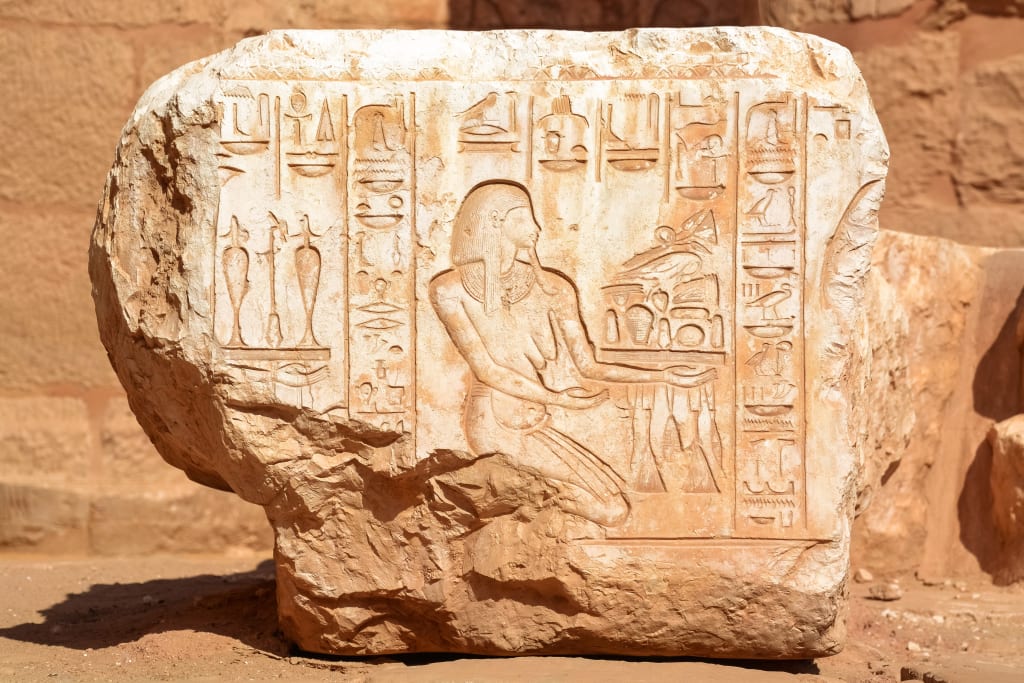
What are ooparts?
Which are the oldest ones?
Do you know any other?
Known as "Oopart," these objects have appeared all over the planet, challenging history as we know it today.
Can explain many of these objects, but others remain a mystery to scientists.
Despite this, sometimes we like to come up with far-fetched theories about things we don't understand very well, especially about what life was like before we were here to understand it.
Ooparts are objects found by archaeologists in excavations, temple rooms, or ruins of ancient civilizations.
These objects are peculiar because they are dated, with the carbon14 test, from millions of years ago, when they were impossible to exist since supposedly there were no developed civilizations and much fewer civilizations with culture.
They are an excellent chimera for researchers.
What are ooparts?
Oopart is the acronym for Out of Place Artifact.
It is a term coined by American naturalist and cryptozoologist Ivan T. Sanderson to denote an object of historical, archaeological, or paleontological interest found in a highly unusual or seemingly impossible context that might defy the chronology of conventional history.
When it comes down to it, although some have proven to be accurate, in general, most of the ooparts are not objects created with technology superior to the one presupposed to the culture they come from, but simple forgeries.
Here are some of the thousands of Ooparts found:
1# The Antikythera Mechanism
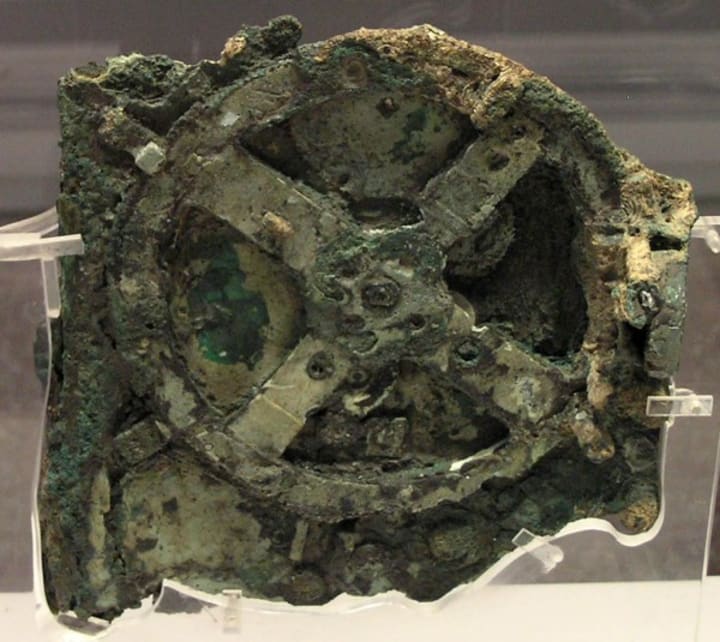
Ancient Greece created something like an analog computer.
It was recovered in the Aegean Sea and was designed to predict astronomical positions and the eclipses of up to nineteen years for astrological purposes and the exact date of six ancient Greek contests, including the four major Panhellenic games.
There must have been more, for Cicero speaks of them.
But, surprisingly, these technologically advanced devices stopped being built at some point, and it would not be until 1,600 years later that they developed astronomical clocks in Europe.
2# The Maine Penny

Another surprising oopart is the "Maine penny," a coin found, as its name says, in the state of Maine in the northern United States.
This Scandinavian coin dates from 1065–1080 AD and belongs to the reign of Olaf III of Norway.
The Maine State Museum and the Smithsonian Institution have accepted it as authentic, suggesting that the Vikings touched American soil long before Christopher Columbus.
Why found it in American pre-Columbian ruins were still cannot be fully explained; some hypotheses suggest that this proves the contact of the Norse with the American Indians; however, other authors suggest that the explanation is more straightforward (and less spectacular): that it is a "seeded" proof because it is the only object of that kind in that place; if there was such contact with the Vikings, it is most likely that various objects would be found and not just a coin as is the case.
However, the American Numismatic Society and other researchers consider it a hoax.
3# The Dorchester pot
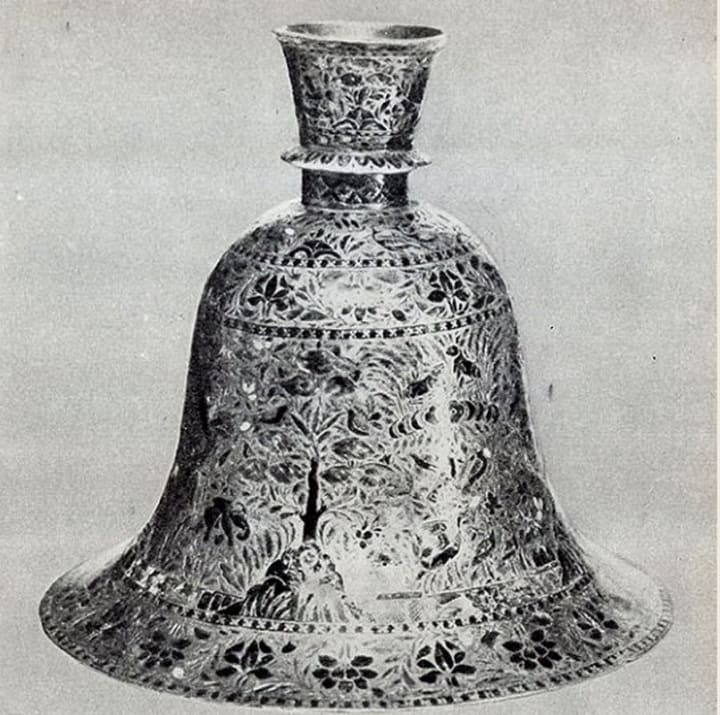
The Dorchester jar was an unusual find in 1851 after exploding a rock from Meeting House Hill in Dorchester, located in Massachusetts.
It consists of a vase or jar made of a zinc and silver alloy about twelve centimeters high and sixteen at the base.
It was discovered several meters deep, under a layer of sedimentary rock.
A means of dating of the time yielded a figure of 100,000 years old, earning the category of Oopart.
In this vase, we can see represented plant species extinct tens of thousands of years ago, as attested by some botanists who reviewed the artifact.
Shortly after its discovery, the prestigious Scientific American magazine devoted an article to such a unique find, in which both the object and the particularity of the discovery is described.

At the beginning of great interest, the news was losing strength due to the rejection of the great majority of the scientific community.
After passing from museum to museum, the object was definitively lost, and its whereabouts are still unknown.
4# The Piri Reis Map

According to some, it includes information that was unknown in 1513, such as the existence of Antarctica.
Many theories have been formulated about this document.
It includes a copy of a map drawn by Columbus, that it is the oldest cartographic record of the Americas, or that it is the most accurate of the 16th century.
Kemal Reis, crewmate of the Ottoman cortege ( freebooter in the service of his Conglomerate), captured seven Spanish vessels off the seacoast of Valencia in 1501.
On one of them was a sailor who claimed to have sailed three times to unknown lands under the command of a confident Columbus.
In his hand, he holds a map drawn by that man.
After the battle in Valencia, Kemal Reis sent the Spanish prisoner with Columbus' map to his nephew.
The latter, who was none other than Piri Reis, used the enslaved person's testimonies and the document to draw the new islands and coasts discovered by the Spaniards in the Caribbean.
More than four centuries later, in 1929, the son of the Grand Vizier of one of the last sultans, a historian studying the archives of the Ottoman Empire, found in the Topkapi Palace (Istanbul) the third part of a map drawn on gazelle skin.
The fragment, which shows the coasts and islands of the New Continent, is signed by a Turkish admiral named Piri Reis — Reis means admiral — Kemal's nephew, dated 1513.
It has been said that this map is the oldest cartographic record of the Americas, that it is the most accurate of the 16th century, but also that it is a copy of one by Columbus himself.
But some claim that it is too accurate for its time, including lands that got only discovered centuries later.
Therefore, it proves the existence of a very advanced civilization that lived in Antarctica 10,000 years ago. It even proves the visit of extraterrestrials.
Piri Reis took three years to draw his map, and according to his notes, the cartographer cites all the sources used along with numerous explanations; it follows that he used some twenty maps, the most striking of which was "drawn by Qulūnbū [Columbus]," in the admiral's own words.
In the map, Piri Reis used more modern charts than that Columbus for his design.
He never took his eye off the one he had of the discoverer (a map made by the latter about 1495), which is deduced by comparing the greater accuracy of the coasts of South America with the numerous errors of the Caribbean.
Moreover, along with the names given to the islands, the best evidence that the Caribbean part is grounded on a chart drawn by Columbus is in Cuba.
Columbus believed it was part of the continent and made his crew swear that it was, on pain of having their speeches cut out.
That is how it appears on the Ottoman map.
Likewise, experts say Hispaniola — an island that contains the Dominican Republic and Haiti — has a strange shape that can explain by comparing it to Cipango, the ancient name for Japan.
The island's shape is very similar to the Japanese archipelago as drew it in MPolo'solo's time.
For McIntosh, Columbus's stubborn character led him to prove that he had reached the Indies and deny the evidence.
He was also known for his secretiveness, and it cannot rule out that he deliberately drew a map with these characteristics.
Until the discovery of the Piri Reis chart, it was not known how Columbus saw his discoveries, but this testimony is preserved in the Piri Reis map of 1513.
5# The black pyramid of the creator's son
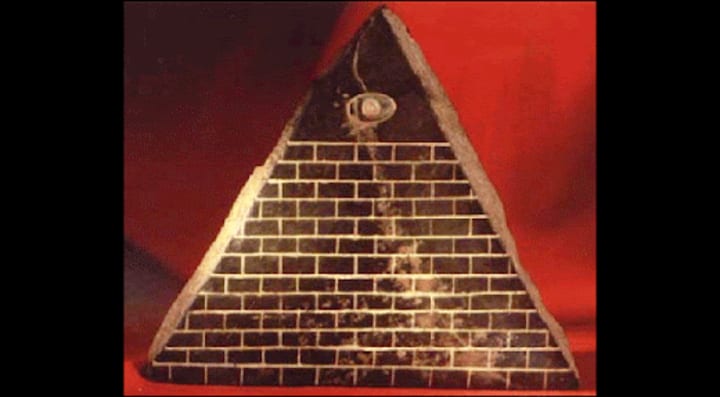
The Illuminati occult pyramid inverted the darkness with the eye of destiny.
This Oopart was found in 1893, specifically in the jungle of Ecuador, Guatemala, and Mexico (where the discovery was made), along with other similar artifacts which were cataloged as "the artifacts of the Manna (Objects with Divine power).
It is an object composed mainly of stone, and its measurements are exactly 27 centimeters high.
The stone has a whitish tone on one side and black on the other, forming a pyramid of bricks that culminates with an eye at the top of its summit.
Someone happened to glimpse the strange object with ultraviolet light, and they could see something surprising; the eye of the small pyramid began to shine strangely; this tells us that the material of the eye was a precious stone.
It is currently in a private collection, so it isn't easy to know its exact location.
6# Nanotechnology in the Urals

Between 1991 and 1993, while prospecting for gold in an area east of the Urals along the Narada, Kozhim, and Balbanyu rivers, small objects of a few centimeters (0.003 millimeters the smallest) appeared one after another in geological strata located between 3 and 12 meters deep, which allowed a subsequent dating according to the level at which they were found, ranging from 20,000 to 318,000 years.
The analysis carried out on these objects by the Russian Academy of Sciences in Syktyvkar varied.
The larger objects were dominated by copper, while the smaller ones contained tungsten and molybdenum.
Tungsten has a high atomic weight, as does molybdenum, with a melting point of 3,410 degrees Celsius for the former and 2,650 for the latter.
Shockingly, the millimeter size of many of these objects requires highly developed technology for their manufacture, capital of the former Soviet Republic of Komi determined that the composition of these objects.
Even today are in the process of developing what has been called "nanomachines," tiny robots designed to act where the human hand is inoperative, as in the case of microsurgery at the brain level or risky operations inside the blood vessels that are not possible to perform with current surgical techniques.
7# Lanzhou screw

During field research, Mr. Zhilin Wang found the rock containing the screw body in the intermediate zone between Gansu and Xijiang provinces.
The color of the rock is an unusual black, and its degree of hardness also makes it particular.
It weighs 466 grams, and its approximate dimensions are 7 x 8 centimeters.
The object inserted in the rock has all the characteristics of an ordinary screw body, about 6 centimeters long.
Since its appearance, the screw body has attracted the attention of many scientists and researchers from institutions such as the "National Bureau of Earth Resources of Gansu Province," the "Research Institute of Geology and Minerals," and the "School of Resources and Environment of Lanzhou University."
After several investigations, the specialists confirmed that the rock should be treated as one of the most valuable objects in Chinese and world archaeology.
8# Pre-Columbian airplanes
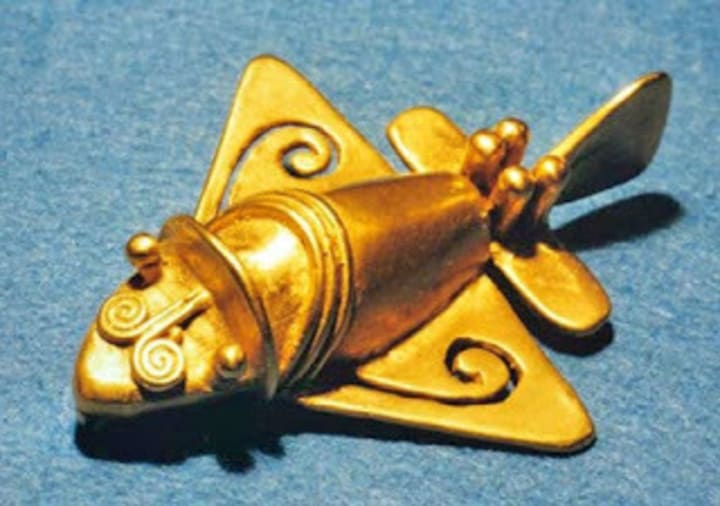
The Gold Museum of Bogota, part of the Bank of the Republic of Colombia, houses one of the most curious collections of pieces from the entire pre-Columbian era.
Its maximum splendor developed about 500 years before the arrival of the Spanish conquerors to the new world, although the tombs where some of these objects have been found are almost 2,000 years old.
Their strange shape has led several experts in aerodynamics, such as J.A. Ullrich, Ivan Sanderson, Arthur Poyslee, etc., to raise the possibility that these religious elements are not precisely any animal species but rather authentic small-scale model airplanes, with all their technical characteristics.
Among valuable necklaces bracelets, bracelets, figures, and other gold ornaments, a set of Religious Ornaments, as archaeologists have cataloged them, with shapes of birds, butterflies, flying fish, etc., is especially distinguished.
These ornaments were found in different tombs as part of the grave goods and are mainly attributed to the Tairona Culture, the Muisca, Calima, Tumaco, Urabá, Cauca, Nariño, Malagana, Tierradentro, San Agustín, Quimbaya, and Tolima form the known Gold Cultures.
The Tairona archaeological area is located in the north of Colombia, in the Sierra Nevada de Santa Marta, near the city of Barranquilla, where their most direct descendants, the Ijkas and Koguis Indians, still live.
There are other pieces in the hands of private collectors, but they all pose the same question.
9# Baghdad Battery

Probably the most famous oopart globally, along with the Nazca lines (large-scale elaborate figures with perfect strokes on the desert).
They are several vases made before 226 AD.
The first one got found in 1936 in a village near Baghdad, and many people concluded that they were jars used to generate electricity, like an electric battery.
The first analysis introduced an electrolyte inside and connected it to a lamp, which lit up very weakly.
However, the official report afterward pointed out that the object behaved like a modern electric battery.
However, the absence of electrolyte traces, the low electrical potential of the system, and the absence of practical uses for electricity at the time call it into question as an oopart.
The most plausible hypothesis is that it was a container for cosmetics or written scrolls.
10# The Kingoodie hammer

In 1844, David Brewster found something unusual in Kingoodie Quarry, a region of Scotland.
It was a hammer, but the strange thing about it was that it got embedded in a block of red sandstone rock from the Mesozoic era, that is, between 360 and 400 million years old.
If this dating were correct, this tool, lost inside a stone, would be located many millions of years before man's appearance on the planet.
For this reason, this finding is considered to be out of real-time.
The handle's wood is petrified, and the inner part, more porous, is carbonized, while the iron head of the hammer is fused with the stone that covers it.
Petrification is a natural occurrence due to a normal geological process by which ancient wood eventually turns to stone.
But for this to happen, about 140 million years must pass, which is precisely a fact that disorients the origin of this tool.
Sources:
https://www.elconfidencial.com
About the Creator
Rocio Becerra
I live in a house next to a river in the middle of the forest. I like horror stories whose main objective is to entertain, and my favorite writer is Stephen King. However, my passion is writing crime fiction.






Comments
There are no comments for this story
Be the first to respond and start the conversation.